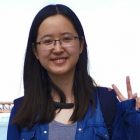Eric is a PhD student in biological engineering where he focuses on the bio-directed synthesis and assembly of advanced materials for the direct air capture of carbon dioxide and its conversion to products with a goal of off-setting the net addition of carbon dioxide to the atmosphere. He uses MATLAB to monitor flow data to better understand the fraction of carbon dioxide converted into products, and a custom MATLAB script to calculate and visualize the products generated using the materials he designed. Eric earned a BSE and MS in biomedical engineering from Arizona StateUniversity.
https://engineering.mit.edu/wp-content/uploads/Lehnhardt-Eric.jpg
Website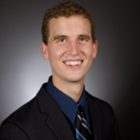
Eric Lehnhardt
Biological Engineering https://engineering.mit.edu/fellows/eric-lehnhardt/Wei is a PhD student in electrical engineering and computer science who uses microfluidic technology to study an important but often neglected player of neurodegenerative disease, the blood-brain-barrier (BBB). She uses engineered microfluidic tissue culture devices to recapitulate the BBB microarchitecture in vivo with an approach normally called organ-on-a-chip (OOC). OOC platforms are microfluidic cell culture chips that simulate the activities, mechanics and physiological response of major functional units of human organs. In order to achieve live time-lapse fluorescence microscopy of these extremely fragile cells during the BBB vasculogenesis process, Wei used MATLAB to develop a rapid and robust camera and microscope control strategy which minimizes phototoxicity during the imaging. She has also usedMATLAB SimBiology to understand the temporal dynamics of different forms of vascular endothelial growth factor reactions with the extracellular matrix as they produce different BBB capillary morphogenesis effects. Wei earned a BS in engineering at Tsinghua University, China.
https://engineering.mit.edu/wp-content/uploads/Liao-Wei.jpg
Website
Wei Liao
Electrical Engineering and Computer Science https://engineering.mit.edu/fellows/wei-liao/Miles is a PhD student in aeronautics and astronautics focusing on space traffic management, space situational awareness, and space sustainability. His research draws on a variety of methods and disciplines to ensure that we, and those who come after us, will be able to continue to enjoy benefits derived from space. His PhD research centers on the development of al ow Earth orbit slotting system using flower constellation theory to coordinate between large numbers of satellites controlled by different operators. MATLAB is helping to enable this work and serves as a “lingua franca”across a multidisciplinary team of collaborators with different backgrounds. He earned a BA in physics and government from Claremont McKenna College and an SM in technology and policy and an SM in aeronautics and astronautics from MIT.
https://engineering.mit.edu/wp-content/uploads/Lifson-Miles.jpg
Website
Miles Lifson
Aeronautics and Astronautics https://engineering.mit.edu/fellows/miles-lifson/Trevor is a master’s student in aeronautics and astronautics working on the development of Super-STOL concept for an Urban Air Mobility mission. His specific task is working on the experimental investigation into blown-lift airfoil performance in a new 2′ x 3′ wind tunnel. To perform these tests effectively, he is developing and testing modules for an experiment-driver and data acquisition system based on MATLAB. This system will enable the department to use the new wind tunnel capabilities for course labs, student projects, sponsored research, and outside users. He earned an SB in aeronautics and astronautics from MIT.
https://engineering.mit.edu/wp-content/uploads/Long-Trevor.jpg
Website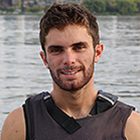
Trevor Long
Aeronautics and Astronautics https://engineering.mit.edu/fellows/trevor-long/Catherine is a PhD student in electrical engineering and computer science. Her research lies at the intersection of classical signal processing and quantum physics. Being theoretical in nature, her research requires the use of MATLAB tools for simulation and theoretical experimentation, varying parameters and other aspects of a theory to gain insight into the theoretical results. For example, she and her collaborators produced code that takes a non-optimal ROC curve and generates the optimal Neyman-Pearson ROC curve with minimal knowledge of the underlying data. More recently, they became intrigued by the application of generalized sampling techniques, including sigma-delta quantization, to the problem of quantum state estimation. She also uses the SIMULINK Sigma-Delta Toolbox, designing and running experiments using the platform. Catherine earned an SB in electrical engineering and physics from MIT.
https://engineering.mit.edu/wp-content/uploads/Medlock-Catherine.jpg
Website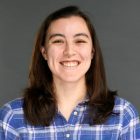
Catherine Medlock
Electrical Engineering and Computer Science https://engineering.mit.edu/fellows/catherine-medlock/Jerry is a PhD student in mechanical engineering whose research focuses on system dynamics and applications control in robotics. In particular, he focuses on lifting linearization techniques for nonlinear dynamical systems to be used for realtime, model predictive control. He has used MATLAB to run simulations and experiment with configurations. Jerry has also served as a TA for the subject Introduction to Robotics, taking MATLAB packages and toolboxes that he uses in his own research and transferring that knowledge to laboratory assignments and projects for undergraduates. In the wake of Covid-19, he recently converted in-class laboratories to completely virtual ones, made possible largely due to the abundant toolboxes and packages of MATLAB. Jerry earned a BS in mechanical engineering from University of California at San Diego.
https://engineering.mit.edu/wp-content/uploads/Ng-Jerry.jpg
Website
Jerry Ng
Mechanical Engineering https://engineering.mit.edu/fellows/jerry-ng/Tam is a PhD student in chemical engineering whose research applies systems engineering to solving problems in pharmaceutical manufacturing, with a focus on continuous processes for their potential to decrease costs and increase flexibility. She has constructed a novel kinetic model, written entirely with MATLAB code, for the manufacturing of the most important class of gene therapy products via triple transfection of mammalian cells. She has designed optimal model-based experiments necessary to estimate the model parameters, and she is using the model to design an optimal operating configuration for viral vector production in a bioreactor. Her goal is to build a complete and controlled continuous platform for gene therapy manufacturing. Tam earned a BS in chemical engineering from University ofMassachusetts at Amherst.
https://engineering.mit.edu/wp-content/uploads/Nguyen-Tam.jpg
Website
Tam Nguyen
Chemical Engineering https://engineering.mit.edu/fellows/tam-nguyen/Max is a postdoctoral associate at MIT’s Institute of Medical Engineering Science and a member of the Edelman Lab(Harvard-MIT Biomedical Engineering Center). His research is focused on advancing computational models representing diseased coronary arteries to accurately reflect the specific biomechanics of a given patient. Models of coronary arteries have previously been developed, but lack the detailed input data necessary to robustly characterize and represent the systems and to confidently address important questions. Max’s goal is to overcome existing barriers by employing a priori knowledge of arterial geometry and image acquisition procedure, as well as strategic engineering assumptions, toe xtract greater geometric and constitutive information from optical coherence tomography imaging, the highest-resolution modality available clinically. He has used the MATLAB programming environment to build, execute, and analyze his central algorithms, allowing him to construct models from in vivo geometry and morphology ascertained with high resolution. Max earned an MSE in biomedical engineering and a BSE in mechanical engineering, both from the University of Michigan and a PhD in mechanical engineering from MIT.
https://engineering.mit.edu/wp-content/uploads/Olender-Max.jpg
Website
Max Olender
Mechanical Engineering https://engineering.mit.edu/fellows/max-olender/Chelsea is a PhD student in aeronautics and astronautics. Her research centers on the simulation on similar and non-similar hypersonic boundary layers with temperature-varying properties.She uses MATLAB to efficiently and robustly model the evolution of hypersonic boundary layers, develop heuristics for the impact of various flow conditions such as free stream Mach number, free stream enthalpy, and surface boundary conditions (temperature or heat transfer distribution) on the behaviors of hypersonic boundary layers. She earned a BS in mechanical engineering from Stanford University and an SM in aeronautics and astronautics from MIT.
https://engineering.mit.edu/wp-content/uploads/Onyeader-Chelsea.jpg
Website
Chelsea Onyeador
Aeronautics and Astronautics https://engineering.mit.edu/fellows/chelsea-onyeador/Sirma is a postdoctoral associate at MIT’s Institute of Medical Engineering Science. Her PhD research focused on developing energy-efficient circuits and systems, with an emphasis on bio-medical and neuroscience applications. She has developed a platform which involves a modular, light-weight, head-borne neuromodulation platform that achieves low-power wireless neuromodulation and allows bi-directional communication to monitor and manipulate the brain activity in real-time.She used MATLAB to send stimulation updates to the neuromodulation device as well as to receive and visualize the recorded brain activity. The graphical user interface she developed can be used in various neuromodulation experiments. Sirma earned a BS in electrical and electronics engineering from Middle East Technical University, Turkey and an SM and PhD in electrical engineering and computer science from MIT.
https://engineering.mit.edu/wp-content/uploads/Orguc-Sirma.jpg
Website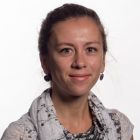
Sirma Orguc
Institute for Medical Engineering and Science https://engineering.mit.edu/fellows/sirma-orguc/David is a PhD student in computer science and a member of the Geometric Data Processing Group. His current research focuses on the hexahedral (hex) meshing problem, which is of interest for applications, including fluid and nonlinear elastic simulations. Automatically computing high-quality hex meshes is a significant problem largely due to the complicated topology of hex mesh singularities, regions of a mesh for which the combinatorial structure is irregular. David’s research addresses challenges through the lens of smooth geometry. The field-based meshing research program replaces the hard combinatorial problem of hex meshing with computing a smooth volumetric frame field, encoding the alignment of the mesh elements with the ultimate aim of recovering a mesh from the field. While frame fields take values in nonlinear, non-convex algebraic spaces (the octahedral and odeco varieties), he has studied the geometry of these spaces and developed manifold-based optimization methods tailored to the frame field problem. He has created aMATLAB toolkit, ARFF, which allows him to experiment directly with high-dimensional spaces and complex topologies.David earned anAB in computer science from Harvard University and anMAS in mathematics from University ofCambridge, England.
https://engineering.mit.edu/wp-content/uploads/Palmer-David.jpg
Website
David Palmer
Electrical Engineering and Computer Science https://engineering.mit.edu/fellows/david-palmer/Edward is a PhD student in materials science and engineering. His research is focused on the manipulation of the lattice crystallography in zirconia shape-memory ceramics by doping it, with the specific aim of making the two transforming phases more crystallographically compatible to prevent cracking. He is developing a combined machine learning and computational thermodynamics approach to design new material combinations with targeted crystallography and improved functional properties. He has additionally developed new optimization procedures that harness the power of recent physics-based simulations to resolve one of the long-standing limitations of the electron backscatter diffraction(EBSD) technique: indexing of pseudosymmetric materials. Through his research, he has developed three open-sourceMATLAB code packages for the scientific community: pcglobal, EBSDrefine, and EMsoft-utilities. Edward earned a BS in materials science and engineering from Northwestern University and an MPhil in materials science and metallurgy fromUniversity of Cambridge, England.
https://engineering.mit.edu/wp-content/uploads/Pang-Edward.jpg
Website
Edward Pang
Materials Science and Engineering https://engineering.mit.edu/fellows/edward-pang/Clara is a PhD student in the Department of Mechanical Engineering developing a dynamic robotic heart model that can be used as a surrogate heart for testing intracardiac devices, such as valve prostheses and occluder devices, before implanting patients.She focuses on replicating the complex beating motion of the heart, translating patient-specific cardiac muscle fibers to soft robotic structures to build a synthetic robot equivalent. She uses MATLAB to compute and visualize fiber tracts in the design process.Clara earned anSB in biological engineering and SM in mechanical engineering, both from MIT.
https://engineering.mit.edu/wp-content/uploads/Park-Clara.jpg
Website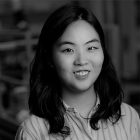
Clara Park
Mechanical Engineering https://engineering.mit.edu/fellows/clara-park/Ryan is a PhD student in mechanical engineering whose research is focused on the development of in-situ instrumentation and measurement techniques for end-to-end interrogation of selective laser melting (SLM) additive manufacturing. He has designed, built, and integrated two optical instruments with an SLM testbed: a mid-wave infrared (MWIR) camera that images thermal (blackbody) radiation from the build area and a near IR (NIR) pyrometer that measures the temperature of material directly at the laser’s focus. Determining the mathematical correspondence between a process signature and a component property (e.g. thermal radiance and density, respectively) is established by geometrically aligning the datasets using a metric of cross-predictive power between the datasets known as mutual information (MI). He is using the Signal Processing Toolbox to relate different process signatures to SLM component properties, including density, metallurgical grain size, and residual stress. Ryan earned a BS in electrical engineering and physics from Northeastern University and an SM in mechanical engineering from MIT.
https://engineering.mit.edu/wp-content/uploads/Penny-Ryan.jpg
Website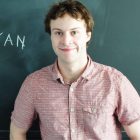
Ryan Penny
Mechanical Engineering https://engineering.mit.edu/fellows/ryan-penny/Madhumitha is a PhD student in nuclear science engineering whose research focuses on developing machine learning frameworks and multiphysics models to improve the safety margins in the operation of commercial light water reactors. She has developed a neural network framework, based on MATLAB models in the Neural Network and Deep Learning Toolbox, to predict the boiling dynamic parameters, allowing accelerated (real-time) determination of these parameters from experiments conducted with advanced infrared thermography and high-speed imaging facilities. She is using these models to further understand the complex boiling process in nanoengineered surfaces proposed for future nuclear reactor components, as well as prototypical cladding surfaces that are used in present day light water reactors. Madhumitha earned a BTech in mechanical engineering from SASTRA University, India.
https://engineering.mit.edu/wp-content/uploads/Ravichandran-Madhum.jpg
Website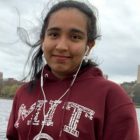
Madhumitha Ravichandran
Nuclear Science and Engineering https://engineering.mit.edu/fellows/madhumitha-ravichandran/Charles is a PhD student in the Department of Electrical Engineering and Computer Science. His research interests include nanophotonics, light-matter-free-electron interactions, machine learning, complexity theory, quantum electrodynamics, and electron beam physics. His research contributions include the demonstration of novel nanophotonic light sources driven by free electrons, photonic computing architectures for complex optimization, and photonic devices to control light at the nanoscale (called metasurfaces). The MATLAB interface—enabling the simultaneous writing of scripts, decoding, evaluating variables in the command line, and plotting—has been instrumental in the design and analysis of his work on polarization-insensitive dielectric-based metasurfaces and on light emission from all-silicon substrates. In particular, MATLAB’s library of optimization algorithms proved extremely helpful in the correction of chromatic aberrations in dielectric metasurfaces, since the design of such metasurfaces requires the optimization of a complicated constraint function at various wavelengths of operation. More recently, he developed an algorithm called the Photonic Recurrent Ising Sampler (PRIS) that can solve NP-hard optimization problems by performing iterative matrix multiplications. While working on the experimental demonstration of the proposed concept with photonic components, he relied on MATLAB’s computational speed for large-scale matrix multiplications to numerically investigate the performance of the algorithm. MATLAB’s Basic Linear Algebra Subprograms enabled him to test the PRIS on large-scale, real-life problems, thus showing its promising performance on a set of benchmark Ising problems. Charles earned a BS in physics from École Polytechnique, Palaiseau, France.
https://engineering.mit.edu/wp-content/uploads/Roques-Carmes-Charles.jpg
Website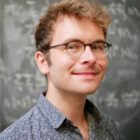
Charles Roques-Carmes
Electrical Engineering and Computer Science https://engineering.mit.edu/fellows/charles-roques-carmes/Lluís is a PhD student in civil and environmental engineering studying geologic CO2 storage (GCS). GCS is the second stage of a technology known as carbon capture, utilization, and storage, a leading climate change mitigation technology and an enabling application for other negative-emissions technologies. Through a combination of geologic and multiphase flow modeling, he is addressing the critical question of migration and potential leakage of CO2 through faults during CO2 storage in sedimentary formations. Lluís is developing all of this research using MATLAB, ranging from visualization to sophisticated developments for the simulation of multiphase flow (governed by complex coupled PDEs) in multimillion-cell grids. In particular, he is a regular user of the MATLAB Reservoir Simulation Toolbox, to which he is also a contributor. Lluís is currently developing physics-based, probabilistic and machine-learning tools for the upscaling of fault properties and quantitative hazard assessment of CO2 migration through faults. Lluís earned a BS in geology from Universitat de Barcelona, Spain and an MS in geotechnical and earthquake engineering from Universitat Politècnica de Catalunya, Spain.
https://engineering.mit.edu/wp-content/uploads/Salo-Lluis.jpg
Website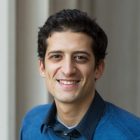
Lluís Saló-Salgado
Civil and Environmental Engineering https://engineering.mit.edu/fellows/lluis-salo-salgado/Rohit is a PhD student in mechanical engineering developing continuum mathematical models for the collective dynamics in biological and engineered active fluids—for example, suspensions of swimming cells or self-propelling colloidal particles. In particular, he is developing and investigating physics-informed machine learning methods to infer partial differential equations that govern macroscopic observables directly from particle data. To achieve this, Rohit has used MATLAB for building a learning framework that coarse-grains microscopic data and results in interpretable models that are essential for predicting the complex dynamics in these systems. He has also extensively used MATLAB as a teaching tool in his role as a TA for a graduate subject in fluid mechanics, as well as an undergraduate subject in dynamics and controls. He earned a BTech in mechanical engineering from Indian Institute of Technology, India and an SM in mechanical engineering from MIT.
https://engineering.mit.edu/wp-content/uploads/Rohit-Supekar.jpg
Website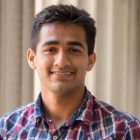
Rohit Supekar
Mechanical Engineering https://engineering.mit.edu/fellows/rohit-supekar/Wenhui is a PhD student in mechanical engineering whose research focuses on the spatial and temporal self-organization of multicellular living systems in 3D during physiological and pathological processes. She uses modern microscopy to image in real time the 4D spontaneous organization of living cells and under various conditions, including different surrounding matrix mechanics and substrate curvature. Using MATLAB, she can extract data from microscopic videos and images and convert the optical intensity information into cell positions as a function of time. She also calculates the multicellular flow field such as swell/shrink, rotation and shear to understand how multicellular system dynamics changes as substrate curvature changes. Based on cell positions in 3D, she uses MATLAB code to perform Voronoi tessellation of cells on a spherical surface that can be used to reveal the cell packing behavior during human lung alveolar development. Wenhui earned a BEng from Xi’an Jiaotong University, China and an SM from MIT.
https://engineering.mit.edu/wp-content/uploads/Tang-Wenhui.jpg
Website
Wenhui Tang
Mechanical Engineering https://engineering.mit.edu/fellows/wenhui-tang/Huanhuan is a PhD student in chemical engineering. She is working on shock electrodialysis (shock ED), a new electrochemical process for water treatment that was designed and developed by the Bazant Research Group. Recent experimental results shows that shock ED can selectively remove multivalent cations, which could be promising for continuous and economical heavy metal ion removal from drinking water and industrious waste. For instance, preliminary results showed that shock ED can almost completely remove lead ions (Pb++) from model Flint tap water (mostly NaCl) from unsafe levels (up to 50ppb) down to <1ppb, well below the EPA action limit of 15ppb, in a point-of-use small-scale device with an operating electrical cost of only pennies per meter cubed of fresh water, compared with $25/m³ for existing (impractical) filtration methods. This new technology could have a significant impact on human health in the U.S. and around the world. She is using MATLAB to study PDE-based models of shock ED from experimental data (including her own) on selective ion removal. Her innovative work with MATLAB could lead to new simulation tools for electrochemical systems involving charged porous media and membranes, including (but not limited to) water treatment applications. Huanhuan earned a BEng and SB in engineering mechanics, both from Tsinghua University, China.
https://engineering.mit.edu/wp-content/uploads/Tian-Huan.jpg
Website